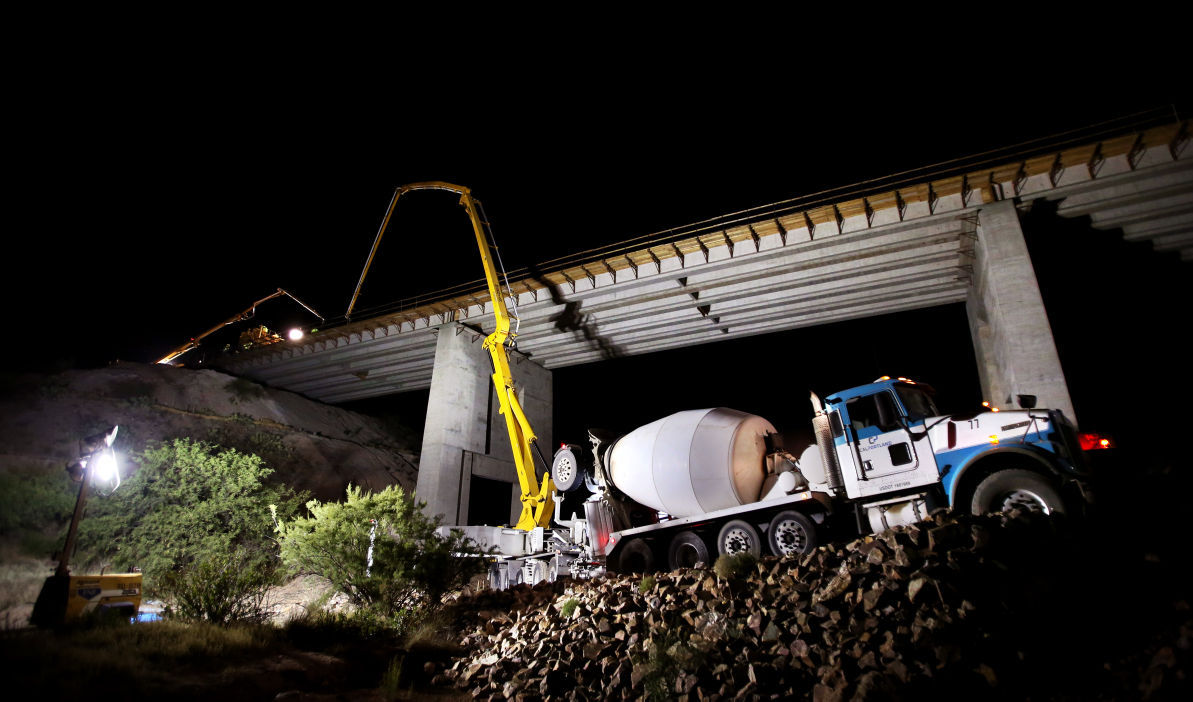Heavy-duty machinery will dig up dirt and pavement when construction begins on West Cortaro Farms Road next spring.
What they won’t dig up are hundreds of saguaros and other native plants. Instead, the plants are being carefully hauled to Pima County’s Native Plant Nursery prior to the widening of the road between North Camino de Oeste and North Thornydale Road.
Since the county began saving plants from road construction through the Sonoran Desert Conservation Plan more than a decade ago, most of the plants have been placed in parks, libraries, and other county-owned property.
But with the Cortaro Farms Road project, “We’ve kind of taken it to the next level,” said Jessie Byrd, manager of the nursery, which is run through the Natural Resources, Parks and Recreation Department.
“That’s the first project where we’re organized enough to go out ahead of time, scoop up all the cactus, hold them for two years, and then send all those exact same plants back out to the project,” she said.
All told, the county plans to salvage more than 2,000 plants from the road project, Byrd said.
So far, 128 saguaros have been relocated by the county and AAA Landscape to the nursery on North Camino de la Tierra near West River Road, where they joined thousands of plants pulled from the Pima Animal Care Center grounds, Manzanita Park and other county properties.
Many of the 400 saguaros still at the Cortaro Farms Road site will be moved once the county negotiates with the owners of the private land where the plants are located, said Ellen Alster, landscape architect for the Pima County Department of Transportation.
With the Cortaro project, the plants are “going back to where they were happy,” said Amy Belk, who is in charge of the nursery’s irrigation.
In addition to helping preserve the genetics of the plants, salvaging them also keeps the animals that lived in and among the plants happy, she said.
But moving the plants can be traumatic for them, and not all salvaged plants survive.
The Arizona Department of Transportation, which runs a similar program along state highways, conducted a survivability study for salvaged saguaros in 2012.
The ADOT analysis showed a survival rate that ranged from 66 percent to 78 percent among four road projects. The best survival rates came when the salvaged saguaros were less than 12 feet tall and were not planted too deep.
For the Cortaro Farms Road project, nursery workers salvaged saguaros less than 5 feet tall, while AAA handled saguaros as tall as 8 feet, Alster said.
To help keep them alive, nursery workers mark the face of the cactus that has built up the most protection from the sun so they can be properly oriented when replanted, Belk said. They also cover newly transplanted cactus with shade for the first few weeks.
The nursery and salvage program costs the county $216,000 annually. The county is prohibited from selling plants to the public.
But one customer they can sell to is the city of Tucson, which replaces large trees under power lines with shorter trees as part of a collaboration with Tucson Electric Power, said Gary Wittwer, the Transportation Department’s landscape architect.
The city of Tucson doesn’t run a nursery or return plants to their original sites, Wittwer said, but it does salvage plants from road projects and move them to other city-owned sites.
Due to the urban nature of the areas around construction projects such as the Grant Road widening, “There’s not a lot to save that’s native,” Wittwer said.
On the other hand, the city “almost always” salvages barrel cactus, ocotillo and other native plants in projects along more rural thoroughfares such as Houghton Road, where the city saved about 100 mesquite trees, he said.
Although plants from the county’s nursery aren’t for sale to the public, anybody interested in buying a salvaged native plant can do so with the Tucson Cactus and Succulent Society, which has rescued native plants from construction since 1999.
Down the road
Commuters on Interstate 10 east of Tucson no longer have to deal with long traffic delays or detours caused by construction on the bridge over Davidson Canyon.
The project forced drivers to at times use a 67-mile detour route to avoid the construction west of Benson.
But paving work finished on the $15.1 million project last week, leaving behind a new westbound bridge and 17 miles of improved pavement.
Crews will continue to work on the shoulders and striping for the next two months, but any traffic interruptions will be minor, the Arizona Department of Transportation said.





